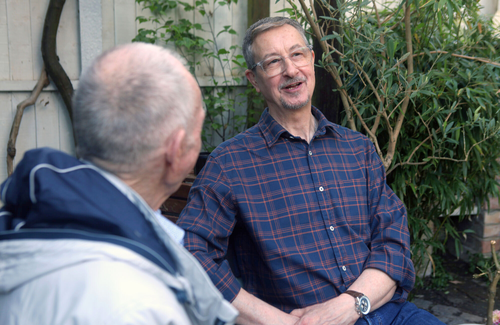
HIV incidence in gay and bisexual men in the UK has fallen to such an extent that new diagnoses among heterosexuals exceeded those in gay and bisexual men for the first time in a decade in 2020.
A poster presented at this week’s Conference on Retroviruses and Opportunistic Infections (CROI 2022) by Dr Valentina Cambiano and colleagues from University College London (with input from the UK Health Security Agency and community organisations, including aidsmap.com), estimates that there were 669 new HIV infections in gay and bisexual men in 2021.
In 2011 there had been about 3000 infections. Cambiano and colleagues estimate that this 75% drop in a decade will continue if current prevention measures are maintained, leading to new cases of HIV in gay and bisexual men becoming rare by 2040.
This is new infections, not diagnoses. During 2020, 976 gay or bisexual men tested HIV positive and 1067 heterosexuals. But this includes people diagnosed with a low CD4 count who may have had HIV for years and people who caught it outside the UK. In fact, while substantial falls in diagnoses in gay men were first reported in 2016, epidemiologists believe new infections in gay men began falling in 2012.
If HIV had continued to spread unchecked within the UK from the start of the HIV epidemic, the number of new HIV infections in gay and bisexual men would instead have exceeded 7600 last year.
The model shows that a combination of prevention measures have led to this striking decline in incidence.
First, the widespread use of condoms, adopted from the mid-1980s onwards. In 1980 about 10% of gay men used condoms for anal sex in 1980, jumping to 78% by 1987. In recent years the proportion reporting they always used condoms with non-regular partners has fallen to 40% but is still substantially higher than pre-epidemic levels.
Secondly, the increase in HIV testing in gay men. It is estimated that 72,710 gay men in the UK took at least one HIV test in 2012. In England alone, 157,707 took at least one test in 2019, which would imply about 182,500 in the whole UK – a rise of 150%.
Thirdly, in 2012, 26% of gay men with HIV in the UK were undiagnosed and no more than 80% were on antiretroviral therapy (ART). Now 92% are diagnosed and of them, nearly all are on ART. The proportion of gay men with HIV who are virally undetectable has risen from below 60% to 86.5%. Guidelines recommending treatment for everyone diagnosed with HIV were adopted in 2015.
Lastly, there’s PrEP. Before 2013 there were virtually no gay men in the UK taking PrEP and the figure is now well over 25,000.
The model used ‘counterfactual’ scenarios to tease out the contribution of each of these changes. The ‘counterfactual’ scenarios supposed the following:
- In the first, condom use in gay men never rose far beyond the levels seen in 1980. If HIV testing rates, the proportion on ART and PrEP use were all at today’s levels, but condom use was only 10%, there would be 1496 new infections in 2021 – more than twice as many as the 669 seen (115% more).
- In the second, if the number of gay men testing for HIV was still the same as in 2012, even though condom use, the proportion of men with HIV on treatment and PrEP use were at present levels, this would lead to 1271 rather than 669 infections (80% more).
- In the third, condom use, testing and PrEP stay at today’s levels, but it is assumed that people only start HIV treatment when their CD4 counts fall below 350, as in 2012. This would lead to 853 infections in 2021, not 669 (25% more).
- Finally, if PrEP had never been introduced, then even if condom use, testing and treatment were all at 2021 levels, then there would be 1433 new infections in 2021 – twice as many as the 669 seen (100% more).
Had none of these interventions been introduced, there would have been 7646 new infections in 2021 – eleven times as many as the 669 that occurred. The four interventions therefore had a synergistic effect – they interacted to produce a combined impact greater than the sum of their separate effects.
The model found that annual HIV incidence in gay men in the UK has fallen to 0.12% in 2021 (one new infection in 833 people). The model forecasts that incidence will continue to fall, to one new infection in 2500 gay men in 2030 and just over one in 5000 in 2040, a situation the researchers call ‘virtual elimination’.
Cambiano V et al. Contributions to the decline in HIV incidence among gay and bisexual men in the UK: a modelling study. Conference on Retroviruses and Opportunistic Infections, abstract 898, 2022.
View the abstract on the conference website.
Gus Cairns is a co-author of the study.

